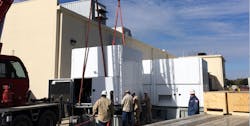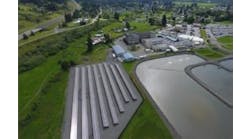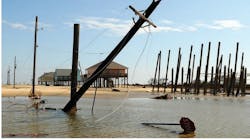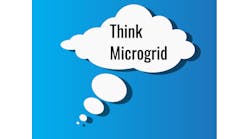What sectors are turning to microgrids and why? The following excerpt from a new Microgrid Knowledge special report looks at the range of end users with a special focus on business microgrids.
Download the full report.
Declining costs and new financing models put microgrids within reach for a variety of businesses and institutions. But early on, the military and research universities paved the way with the technology.
In the United States, the military’s use of microgrids grew out of strategic initiative to improve its energy security. The Army has made microgrids part of its energy planning as it strives to make military installations capable of operating for two weeks without grid power. Microgrids help ensure electric supply to military installations should a natural disaster or cyberattack disrupt the power grid. They also offer a way for the military to reduce fuel deliveries in vulnerable outposts.
Some of the most advanced microgrids in the US are at universities, among them Princeton University, the University of Texas at Austin, and the University of California at San Diego. Research universities could lose years of laboratory work if critical facilities, such as refrigeration units, are knocked out by a power outage. Therefore, they are highly focused on energy reliability. Additionally, the self-contained environment at colleges and universities provides a good environment for the growth of microgrids. Universities often produce their own heat and cool air, which is a perfect application for a microgrid that incorporates a combined heat and power plant.
Hospitals are also obvious candidates for microgrids. Hospitals typically use 2.5 times as much energy as a commercial building of the same size, and loss of power at a hospital could have dire, life threatening consequences.
Many jurisdictions enforce regulations that require hospitals to have backup generators with on-site fuel storage. Unfortunately, these backup systems do not always perform when needed, which was the case during Superstorm Sandy in New York City in 2012. Hospitals, such as Bellevue Hospital, New York University’s Langone Medical Center, and Coney Island Hospital, were forced to evacuate hundreds of patients when backup generators and other electrical systems failed. The problem, in part, is that backup generators sit idle most of the time. So, despite regular testing, they can fail when needed most. On the other hand, microgrids include a generation source that operates on a regular basis, so its status is always known.
The military, universities and hospitals continue to install and use microgrids. But the business sector is the industry’s latest frontier as data centers, retail stores, resorts, manufacturers and other businesses adopt the technology.
In some markets demand charges account for as much as 50% of a business’ electric bill. So microgrid use offers the possibility of significant savings.
Growing use of business microgrids
In 2017, commercial and industrial microgrids captured just under 20% of spending on microgrid installations. By 2026, that share of spending is expected to grow to at least 35%, according to Navigant Research. In fact, the consulting firm reported a near quadrupling of the energy capacity from microgrids used by businesses from 2016 to 2017.
Businesses are turning to microgrids for backup generation. And business microgrids can also reap the additional benefits the microgrid-as-a-service model affords today.
Enchanted Rock installation at H-E-B store. Photo courtesy of Enchanted Rock.
Consider the hefty utility demand charges that some stores pay. The charges are based on a company’s energy use during periods of peak demand on the grid. By using microgrid power during these periods, rather than grid power, a store can reduce what it pays in demand charges. In some markets demand charges account for as much as 50% of a business’ electric bill. So microgrid use offers the possibility of significant savings.
Business microgrids also allows retailers to avoid the direct costs associated with loss of electricity. Outages result in lost business, damaged equipment, and spoilage of products that require controlled temperatures, such as food and pharmaceuticals. The U.S. government puts the annual cost of weather related outages to the nation’s economy at $18 billion to $33 billion.
In addition, businesses that withstand power outages create loyal customer bases. When customers know they can rely on retailers to provide services despite area outages, they are more likely to return when conditions are normal.
For all these reasons, a growing number of retail organizations are turning to business microgrids. Here are some examples:
- In Texas, Enchanted Rock has installed more than 100 microgrids through its Integrated Reliability On Call (iROC) offering for companies, like Buc-ee’s, a large convenience store chain. Enchanted Rock’s natural gas generators are located at customer sites, and the microgrids sell output to the wholesale market, which allows Buc-ee’s to pay a small fee that is a fraction of what it would otherwise cost for a microgrid installation.
- In New York, many retailers have turned to microgrids. In Brooklyn, the Whole Foods uses a microgrid that allows community members to gather during a power outage to charge phones, connect with family members, and purchase hot food. The TWA Hotel at JFK Airport also installed a microgrid to save money and achieve grid independence. New York City’s economic development arm is funding the installation of 11 microgrids at a variety of businesses across the city.
- Home Depot stores in the Northeast also used microgrids to keep power flowing and stores open during a Summer 2019 heat wave that knocked out electricity to the neighbors.
- In Ontario, Canada a study is underway for a microgrid at a business technology park designed to accommodate 1.2 million square feet of office space on 120 acres.
- A pharmaceutical warehouse in Santa Barbara, California installed a microgrid to provide medicine and medical supplies for disaster relief. In Chino, California a Honda parts center installed a microgrid that allows it to meet California’s zero net energy goals.
These are just a few examples of companies that are protecting their bottom line through the use of business microgrids.
Microgrids also allow retailers to avoid the direct costs associated with loss of electricity. Outages result in lost business, damaged equipment, and spoilage of products that require controlled temperatures, such as food and pharmaceuticals.
The next chapter offers an in-depth look at a grocery store chain that discovered the competitive advantage of its microgrids when a hurricane crippled the Houston area.
Also, if you missed the first three installments of the microgrid retail special report article series, see below to catch up:
-
Why Electric Reliability is so Important for the Retail Sector
- Benefits and Barriers to Retail Microgrid Deployments
Download the full report, “Microgrids for the Retail Sector: Your competition is in the dark, but you’ve got power,” courtesy of Enchanted Rock.








